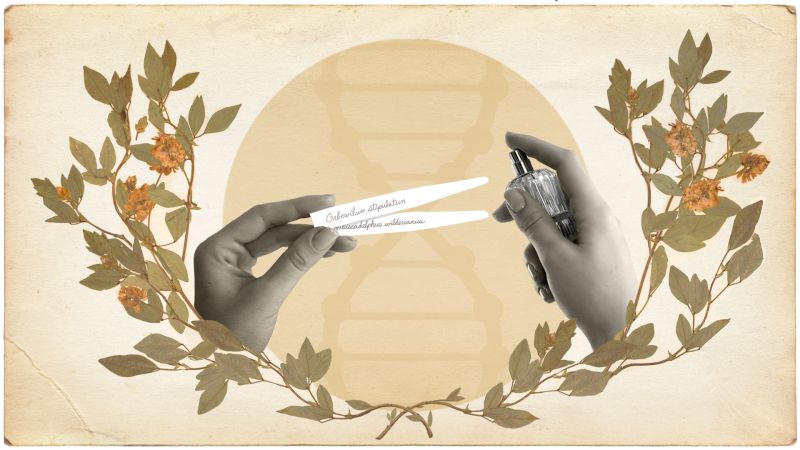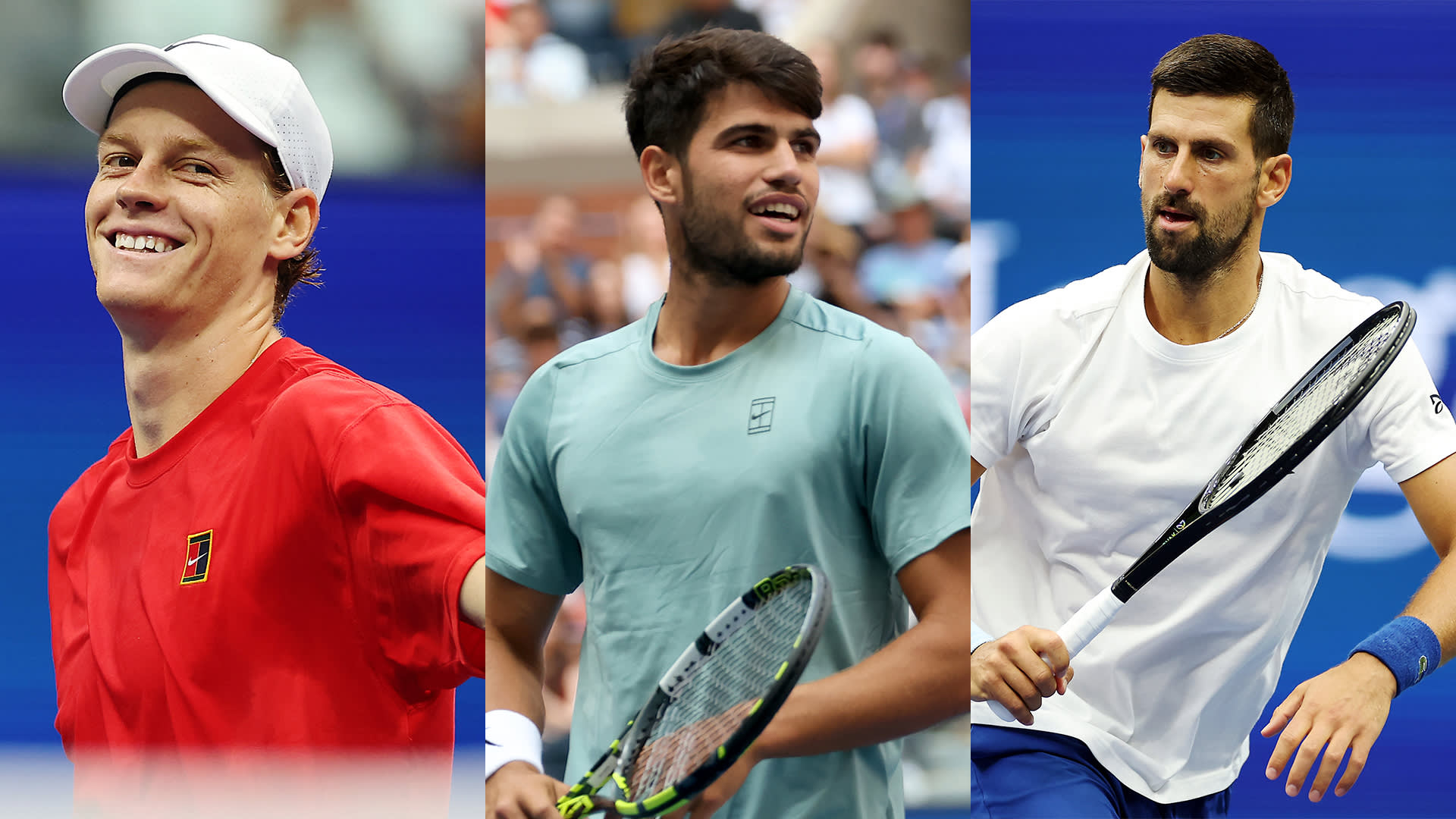The Science Of Scent: Bringing Back The Fragrances Of Extinct Flowers

Welcome to your ultimate source for breaking news, trending updates, and in-depth stories from around the world. Whether it's politics, technology, entertainment, sports, or lifestyle, we bring you real-time updates that keep you informed and ahead of the curve.
Our team works tirelessly to ensure you never miss a moment. From the latest developments in global events to the most talked-about topics on social media, our news platform is designed to deliver accurate and timely information, all in one place.
Stay in the know and join thousands of readers who trust us for reliable, up-to-date content. Explore our expertly curated articles and dive deeper into the stories that matter to you. Visit Best Website now and be part of the conversation. Don't miss out on the headlines that shape our world!
Table of Contents
The Science of Scent: Bringing Back the Fragrances of Extinct Flowers
The intoxicating perfume of a long-gone orchid, the subtle spice of a vanished rose – these are scents lost to time, victims of extinction. But what if we could resurrect these olfactory ghosts? Scientists are pushing the boundaries of fragrance science, employing cutting-edge techniques to recreate the scents of extinct flowers, offering a captivating glimpse into the past and a unique perspective on biodiversity loss.
This isn't just about recreating pleasant aromas; it's about understanding the complex interplay between plants, pollinators, and the environment. The fragrances of extinct flowers hold invaluable clues to their evolutionary history and the ecosystems they inhabited. By reconstructing these scents, scientists hope to gain a deeper understanding of the ecological consequences of plant extinction.
Unlocking the Secrets of Extinct Fragrances
The process of recreating extinct flower scents is a fascinating blend of botany, chemistry, and historical research. Scientists rely on several key methods:
-
Historical Records: Detailed descriptions of flower scents from botanical journals, herbarium notes, and even literature can provide valuable clues. These descriptions, however subjective, can offer a starting point for chemical analysis.
-
Chemical Analysis of Related Species: By analyzing the volatile organic compounds (VOCs) in closely related extant species, scientists can infer the likely composition of extinct flower fragrances. This comparative approach leverages the principles of phylogenetic analysis.
-
Ancient DNA: While less frequently successful for scent reconstruction, ancient DNA from preserved plant specimens can potentially reveal genetic information related to the biosynthesis of fragrance compounds. This field is rapidly evolving, offering exciting possibilities for future research.
-
Advanced Analytical Techniques: Gas chromatography-mass spectrometry (GC-MS) is a crucial tool used to identify and quantify the individual VOCs present in a flower's scent. This allows for a detailed chemical profile to be constructed, even from limited material.
Beyond Nostalgia: The Importance of Scent Reconstruction
The implications of this research extend far beyond simple nostalgia. Recreating the scents of extinct flowers has several significant benefits:
-
Enhancing Conservation Efforts: By understanding the specific scents that attracted pollinators to extinct species, scientists can develop strategies to attract pollinators to surviving related species, potentially aiding in conservation efforts.
-
Developing New Fragrances: The unique chemical profiles of extinct flower scents could inspire the creation of entirely new and innovative fragrances in the perfume industry.
-
Educating the Public: Reconstructed scents provide a powerful and visceral way to engage the public with the issue of biodiversity loss, promoting awareness and understanding of the importance of conservation.
The Future of Olfactory Archaeology
While still in its early stages, the field of "olfactory archaeology" holds immense potential. As analytical techniques become more sophisticated and our understanding of plant biochemistry improves, we can anticipate even more accurate and detailed reconstructions of extinct flower fragrances. This exciting field blends scientific rigor with the evocative power of scent, offering a unique window into a lost world of floral beauty and biodiversity. Learn more about the fascinating world of plant conservation by visiting the . Their research plays a vital role in understanding and preserving plant diversity.

Thank you for visiting our website, your trusted source for the latest updates and in-depth coverage on The Science Of Scent: Bringing Back The Fragrances Of Extinct Flowers. We're committed to keeping you informed with timely and accurate information to meet your curiosity and needs.
If you have any questions, suggestions, or feedback, we'd love to hear from you. Your insights are valuable to us and help us improve to serve you better. Feel free to reach out through our contact page.
Don't forget to bookmark our website and check back regularly for the latest headlines and trending topics. See you next time, and thank you for being part of our growing community!
Featured Posts
-
 Possible Tornado Spotted On St Johns County Traffic Camera Authorities Respond
May 31, 2025
Possible Tornado Spotted On St Johns County Traffic Camera Authorities Respond
May 31, 2025 -
 Historic Data Center Growth Tests Georgia Powers Power Grid Predictions
May 31, 2025
Historic Data Center Growth Tests Georgia Powers Power Grid Predictions
May 31, 2025 -
 Understanding Billy Joels Neurological Illness Treatment Options Explained By Dr Sanjay Gupta
May 31, 2025
Understanding Billy Joels Neurological Illness Treatment Options Explained By Dr Sanjay Gupta
May 31, 2025 -
 A Self Inflicted Wound Western Actions Contributing To Russias War Effort In Ukraine
May 31, 2025
A Self Inflicted Wound Western Actions Contributing To Russias War Effort In Ukraine
May 31, 2025 -
 Hip Hop Rivalry Suge Knight Asks Diddy To Take The Stand
May 31, 2025
Hip Hop Rivalry Suge Knight Asks Diddy To Take The Stand
May 31, 2025
Latest Posts
-
 Epping Asylum Hotel Government Challenges Court Ruling
Aug 23, 2025
Epping Asylum Hotel Government Challenges Court Ruling
Aug 23, 2025 -
 Government Launches Appeal Against Epping Asylum Hotel Ruling
Aug 23, 2025
Government Launches Appeal Against Epping Asylum Hotel Ruling
Aug 23, 2025 -
 Us Open 2025 Preview Comparing Sinner And Alcarazs Draw Challenges
Aug 23, 2025
Us Open 2025 Preview Comparing Sinner And Alcarazs Draw Challenges
Aug 23, 2025 -
 Detroit Lions Vs Houston Texans Preseason Game Your Complete Viewing Guide
Aug 23, 2025
Detroit Lions Vs Houston Texans Preseason Game Your Complete Viewing Guide
Aug 23, 2025 -
 Austins Weather Latest On Tropical System Erin And Todays Storm Potential
Aug 23, 2025
Austins Weather Latest On Tropical System Erin And Todays Storm Potential
Aug 23, 2025
